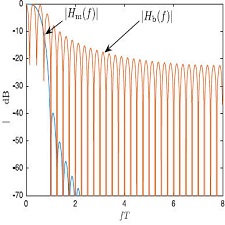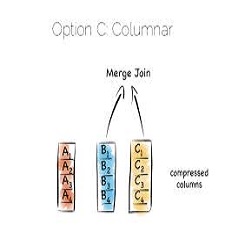توضیحات
ABSTRACT
The primary objective of this study was to assess if there were any perceptual differences between gender groups regarding employment equity practices. A sample of 4729 participants from different companies and industries completed the Employment Equity Questionnaire. Results from an ANOVA indicated that there were significant differences between gender groups, but only a small portion of the variance was explained by perceptual differences on employment equity practices. The instrument thus possesses some discriminant validity. Further analyses on an item level indicated that there were significant differences between gender groups, but these differences were not attributable to gender stereotypes. Specific employment equity practices were identified that need closer attention from management’s side to address gender discrimination.
INTRODUCTION
Legislative intervention such as equal employment opportunity (EEO) and Affirmative Action (AA) policies were introduced in various countries across the globe to address this issue about fairness and discrimination in the workplace. However, it seemed, that inequality still persisted (Humphries & Grice, 1995). Mavin (2001) argued that male career models and approaches remained, and that women were being disadvantaged when they stepped out to meet family responsibilities. Women were subtly forced to choose between upward mobility in career and family stability in the home, or even a family at all. Now if this problem existed from the sixties up to the twenty-first century and there was supportive legislation to abolish it, it would be a pertinent issue especially for an emerging market such as South Africa. Employment Equity Legislation, internationally and nationally, endeavored to ensure the equitable representation of women and other designated groups in all occupational categories and levels in the workplace (Thomas, 2002). Within these legislation and connecting literature various concepts were being used constantly. It should be useful to investigate what equal employment opportunity encompassed. Employment Equity was seen as a long-term programme to ensure that all employees have a fair chance in the workplace. It would be achieved when no person is denied employment opportunities or benefits for reasons unrelated to their abilities (Thomas, 2002, Toumishey, 2001). Affirmative action was seen as a short-term strategy by which equality (employment equity) in the workplace would be achieved through the active elimination of systemic discrimination (Thomas, 2002, Toumishey, 2001).
چکیده
هدف اصلی این مطالعه، ارزیابی اینکه آیا تفاوت های ادراکی بین گروه های جنسیتی در مورد شیوه های اشتغال مشاغل وجود دارد. نمونه ای از 4729 شرکت کننده از شرکت ها و صنایع مختلف پرسشنامه سهمیه اشتغال را تکمیل کرد. يافته های تحليل واريانس نشان داد که اختلاف معنی داری بين گروه های جنسیتی وجود دارد اما تنها بخش کوچکی از واریانس با تفاوت های ادراکی در شیوه های عدالت استخدام توضیح داده شده است. به این ترتیب، ابزار دارای روایتی متمایز است. تجزیه و تحلیل های بیشتر در مورد سطح اقلام نشان داد که تفاوت های معنیداری بین گروه های جنسیتی وجود دارد اما این تفاوت ها به کلیشه های جنسیتی منجر نمی شود. روش های خاص استخدام استخدام شناسایی شده اند که نیاز به توجه بیشتری از طرف مدیران برای رسیدگی به تبعیض جنسیتی دارند.
مقدمه
مداخلات قانونی مانند فرصت های برابر برای اشتغال (EEO) و سیاست های اقدام مثبت (AA) در کشورهای مختلف در سراسر جهان برای رسیدگی به این موضوع در مورد عدالت و تبعیض در محل کار معرفی شد. با این حال، به نظر می رسید که نابرابری همچنان ادامه داشت (Humphries & Grice، 1995). Mavin (2001) استدلال می کند که مدل های شغلی و رویکردهای مردان باقی مانده است و زنان هنگامی که برای رفع مسئولیت های خانوادگی به مرحله اجرایی رسیدند محروم شدند. زنان به شدت مجبور بودند بین ارتقاء ارتقاء حرفه ای و ثبات خانوادگی در خانه یا حتی یک خانواده را انتخاب کنند. در حال حاضر اگر این مشکل از دهه شصت تا قرن بیست و یکم پیش آمد و قوانین حمایتی برای لغو آن وجود داشت، این مسئله مخصوصا برای یک بازار نوظهور مانند آفریقای جنوبی بود. قانون حقوق و دستمزد استخدامی، بین المللی و ملی، تلاش می کند تا نمایندگی عادلانه از زنان و سایر گروه های تعیین شده را در تمام دسته ها و سطوح شغلی در محل کار تضمین نماید (توماس، 2002). در این قوانین و ارتباط ادبیات، مفاهیم متعددی مورد استفاده قرار می گرفتند. باید بررسی شود که چه فرصت های شغلی برابر است. Equity Employment به عنوان یک برنامه دراز مدت برای اطمینان از اینکه همه کارکنان شانس مناسبی در محل کار دارند، دیده می شود. این امر می تواند به دست آید زمانی که هیچ کس از فرصت های شغلی یا منافع به دلایل غیر مرتبط با توانایی هایش انکار نمی شود (توماس، 2002، Toumishey، 2001). اقدام مثبت به عنوان یک استراتژی کوتاه مدت به شمار می رود که برابری (حقوق اشتغال) در محل کار از طریق حذف فعالانه از تبعیض سیستمیک (توماس، 2002، Toumishey، 2001) به دست می آید.
Year: 2003
Publisher : ELSEVIER
By : BETSI VAN ZYL,GERT ROODT
File Information: English Language/ 8 Page / size: 131 KB
Only site members can download free of charge after registering and adding to the cart
سال : 1382
ناشر : ELSEVIER
کاری از : BETSI VAN ZYL، GERT ROODT
اطلاعات فایل : زبان انگلیسی / 8 صفحه / حجم : KB 131


![FEMALE PERCEPTIONS ON EMPLOYMENT EQUITY[taliem.ir]](https://taliem.ir/wp-content/uploads/FEMALE-PERCEPTIONS-ON-EMPLOYMENT-EQUITYtaliem.ir_.jpg)





![FORMAL AND INFORMAL DISCRIMINATION AGAINST[taliem.ir] (2)](https://taliem.ir/wp-content/uploads/FORMAL-AND-INFORMAL-DISCRIMINATION-AGAINSTtaliem.ir-2-150x150.jpg)
![The Development of Islamic Financing Scheme for SMEs[taliem.ir]](https://taliem.ir/wp-content/uploads/The-Development-of-Islamic-Financing-Scheme-for-SMEstaliem.ir_-1-150x150.jpg)
نقد و بررسیها
هنوز بررسیای ثبت نشده است.